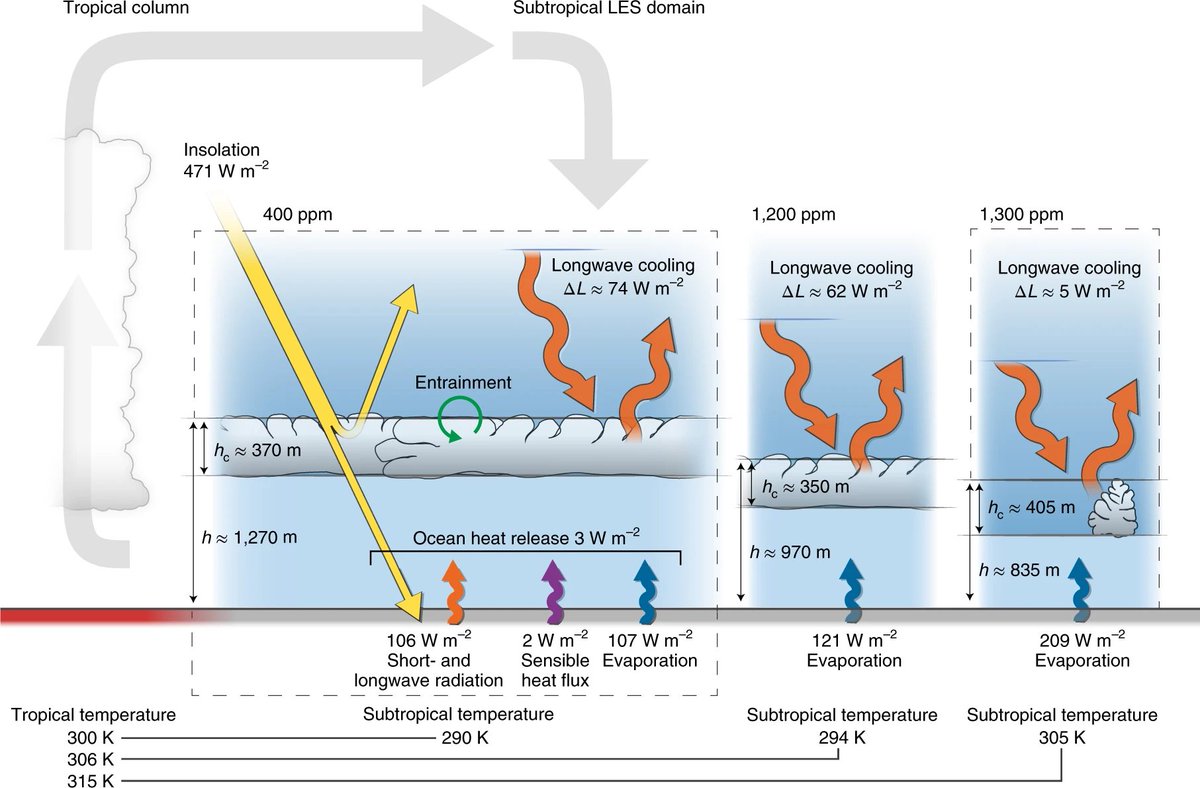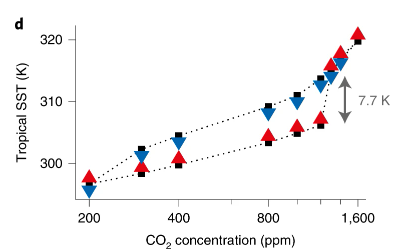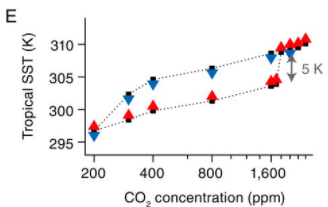Some thoughts and questions about the new PNAS paper on cloud collapse Schneider et al. 2020 [S20-solar]: "Solar geoengineering may not prevent strong warming from direct effects of CO2 on stratocumulus cloud cover" https://www.pnas.org/content/early/2020/11/10/2003730117 1/
First, let's look at their first paper, Schneider et al. 2019 [S19-CO2]: "Possible climate transitions from breakup of stratocumulus decks under greenhouse warming" https://www.nature.com/articles/s41561-019-0310-1?fbclid=IwAR0zRW3UCCcvZyVz-Or7XKWCLiIlG2i28zjsrw2RPNh8al6vKapXYp78av0 2/
In both S19-CO2 and S20-solar they apply a very high-resolution cloud resolving model on a small "representive" patch of marine strato-cumulus and find that there's a potentially very large feedback that could kick in at very high CO2 concentrations. 3/
As the atmospheric warming builds, driven by both surface warming (a feedback effect) and the direct warming effects of CO2 on the atmospheric column (a forcing effect), there comes a point where the low-level marine strato-cumulus layer evaporates (in this model) 4/
Generalizing from this local cloud-resolving simulation to a global warming response (tricky) they predicted a huge potential warming effect of ~8 C and that this would effectively lock the world into a hot-state as the cloud-layer wouldn't reform until CO2 is brought WAY down.5/
The question that this new study asks is whether solar geo (a solar constant reduction here) could prevent this catastrophic cloud feedback, and they find that it couldn't (and mistakenly casting this as a risk of solar geo rather than of CO2 which some media echoed). 6/
While the study notes that solar geo could reduce the magnitude of the feedback (+5 vs. +7.7) it doesn't note the arguably more significant increase in the threshold CO2 level, which rises from between 1200 and 1400 (S19-CO2, right) to between 1600 and 1800 (S20, left). 7/
A few caveats. By focusing on a single, small patch they find a sudden transition but integrated over the full marine strato-cumulus decks this would surely be smoothed out (I think I heard this from @cristiproist). Big assumptions are made to get global results from a patch. 8/
Surface warming plays a significant role in this feedback (see hysteresis of S19-CO2) so its problematic that their solar geo experiment which "offsets CO2 forcing" and hence global warming produces a substantial tropical warming (+7C!?) before this threshold is crossed. 9/
How much did this pre-threshold warming contribute to the risk of crossing the threshold? If this tropical warming had been eliminated, as it would have been in a global model simulation of solar geoengineering, would the threshold have been crossed at all? 10/
While the authors have demonstrated the potential for a marine strato cumulus collapse (in a model) and shown the important contribution of the forcing-driven CO2 atmospheric warming, I think they have misrepresented the potential for solar geo to help with this risk. 11/
Both by not correctly representing its global cooling effect in their simulations and by not highlighting the fact that it substantially raises the threshold level of CO2 at which this collapse occurs by ~400 ppm equal to 3x the increase from pre-industrial to today! 12/
Despite its limitations, this is a fantastic contribution to the literature and is exactly the kind of study that needs to be done to better understand the risks of solar geoengineering. FIN/

 Read on Twitter
Read on Twitter






